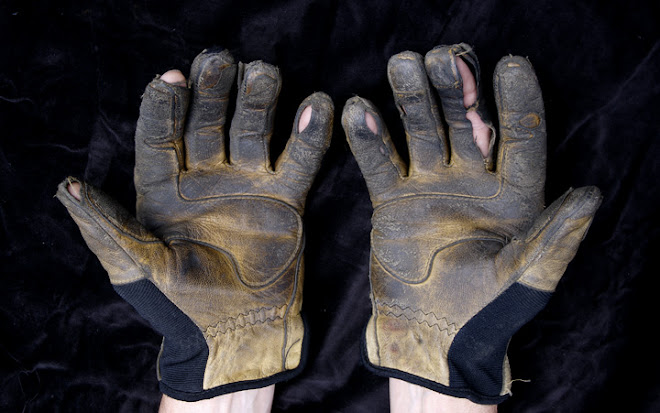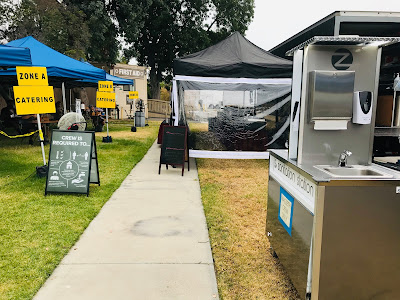Well, it's been an interesting month, hasn't it? Other than the election -- and I think we've all heard quite enough about that by now -- the only actual news is that Hollywood was so busy in early November that my union was hiring permits, which means every able-bodied, dues-paying member of Local 728 was employed or for some reason unwilling to work. Film and television production are not affected by the current Stay at Home Order in Los Angeles, since it's considered an "essential service." I'm not so sure about that "essential" designation, but after six months of shutdown, people are very happy to be back on the job again, and although positive tests continue to pop up here and there (many of which shut down their shows for a while, then turned out to be false positives), the Covid safety protocols seem to be reasonably effective.
There's always room for the absurd in Hollywood, of course, as reported by the O. G. Queen of Industry Bloggers, Ms. Peggy Archer. Although Totally Unauthorized has been quiet for a while, she's active on Twitter, where the following missive and photo recently posted:
"Apparently, a show in New Orleans had a party-related Covid outbreak, and the studio brass dressed all the producers down. Our department was issued 6 foot sticks."
Whether these sticks are to be used as weapons to fend off anti-masker Covid-deniers, to measure and maintain the requisite six feet between crew members, or simply to serve as (ahem) "pointed" reminders to keep your distance, is unclear.
Producers. Can't live with 'em, and can't live without 'em.
Meanwhile, the virus has brought new job classifications on set: the Covid Manager and Covid Compliance Officer, tasked with making sure the cast and crew are following proper safety protocols. In this episode of KCRW's The Business, a production supervisor-turned-Covid Manager discusses the trials and tribulations of her new gig. Until listening to this, I'd only considered how Covid has impacted the lighting, grip, and camera departments, all of whom have to wear face shields and masks on set -- which is bad enough -- but she discusses how tough the protocols are on the hair, makeup, and wardrobe departments, whose extremely close contact with unprotected actors requires them to wear maximum coverage Covid suits. Imagine doing that while working long day exterior shoots in the summer in Hollywood, Atlanta, New Orleans, or New York.
No thanks. I tip my cap to those people, who can't be having much fun on set these days.
***********************************************
***********************************************
This hosting platform - Blogger - continues to find new ways to piss me off. As you've probably noticed, the formatting often changes without warning - double-spacing here, single-spacing there - and the font sizes can vary from paragraph to paragraph. Some of those flaws are fixable, others still mystify me. Blogger "upgraded" the site a few months ago, which led to weeks of confusion as I tried (and often failed) to re-learn how to do things that were accomplished with ease before the "upgrade." Why is it that these digital entities seem compelled to "fix" things that weren't broken, and in the process drive their customers up the fucking wall?
Don't bother trying to answer that rhetorical question. So it goes in modern life, where it -- whatever "it" may be -- just is what it is.
I thought I had things more or less sussed out, but now Blogger suddenly won't allow me to post the photo of a book here ... so fuck it -- I'll just send you to an NPR review of that book, which is probably just as well. Now I don't have to sit here for thirty minutes coming up with an apt description of a wonderfully entertaining book that if you haven't yet read, should definitely go on Santa's gift list to leave under your tree at Xmas.
My Lunches with Orson is an edited transcript from a series of lunchtime conversations between Henry Jaglom and Orson Welles in the last years of his life, during which they discussed a wide spectrum of subjects. Welles is rightly regarded as the great tragic genius of Hollywood, a man whose brilliance is unquestioned, but whose artistic temperament and refusal to crank out formulaic crowd-pleasers kept him at odds with the studios for most of his career. Citizen Kane is generally regarded as one of, if not the, greatest films ever made, and although I'm not a fan of such lists, I can't argue with that. My own personal favorite of Welles has always been Lady from Shanghai, but that's just me. Your mileage, as the saying goes, may vary.
I only saw Welles once, a fleeting glimpse while heading into the Hollywood office of the EDD to file for unemployment -- an experience described here. In this interview, Welles discusses Touch of Evil, another of his classics, and if you still want more, here's a longer conversation with the man.
But seriously -- get your hands on a copy of My Lunches with Orson. You'll be glad you did.
*****************************************************
With the passing of Sean Connery, another cinematic icon of my youth has departed the earthly realm for whatever comes next. You no doubt read/heard all about him in the past few weeks, but this obit from the BBC is a good one, and might be worth your time. Our modern movie stars are very popular, but they really don't make 'em like they used to, and for his type of roles, Sean Connery pretty much broke the mold.
*****************************************************
We take the Steadicam for granted these days, having forgotten what a truly revolutionary device it really was. For many of you, it's always been in the cinematic toolbox, but there were no Steadicams fifty years ago, and those of us with a few more years weighing down our shoulders remember the impact of Garret Brown's creation when it hit Hollywood. The first Steadicam footage I saw back in the day pretty much blew my mind, and here you can see some of the early tests of his prototype from 1974, which demonstrated what a quantum leap it represented.
******************************************************
From time to time I get requests to promote a product or service related to the film industry, and another such missive rolled in the other day. Having no way of knowing how legit these things are, I usually ignore them. BS&T was started for the sole purpose of sharing my experiences and offering my perspective on the industry. I've refused every offer to "monetize" this website over the years, and am not about to start now, nor will I lead you astray by recommending a service I don't know anything about.
With that caveat, The Mercury Report might be worth a look for those of you still trying to get your career in gear. In their words:
I asked for samples, so they sent me a few pages from the latest issue. It looks legit, with extensive listings of feature films about to begin production all over the country and beyond. It's packed with contact information (names and e-mail address) that you'd be hard pressed to uncover on your own. Given that department heads hire most of the crew on a show, and typically hire people they already know, it seems unlikely that grips, juicers, props, set-dec, camera, hair/makeup people, and other union crew members can find work through The Mercury Report, but newbies and actors could. Some of the shows listed are non-union, which is where many of us got our start.
At $55/month for the standard version, it's not cheap. Still, given how rough this year was on industry veterans well-connected with the job market, I can only imagine how tough it is on those still trying to get a foot in Hollywood's door. The months leading up to November might well have some of you feeling like the protagonist of this very short film.
On that note, cheer up, kiddos. I know how ugly things look right now with Covid on the rise, the body count mounting higher with each passing day, and widespread distribution of vaccines several months away. Whatever the weather brings, we're in for a long, bleak winter, but our ancestors tell us that it's always darkest just before the dawn, and they're often right. With any luck, their wisdom will hold this time as well. Be patient, wear your mask, stay healthy, and hang tough.
And try have yourselves a Merry Little Christmas.

















